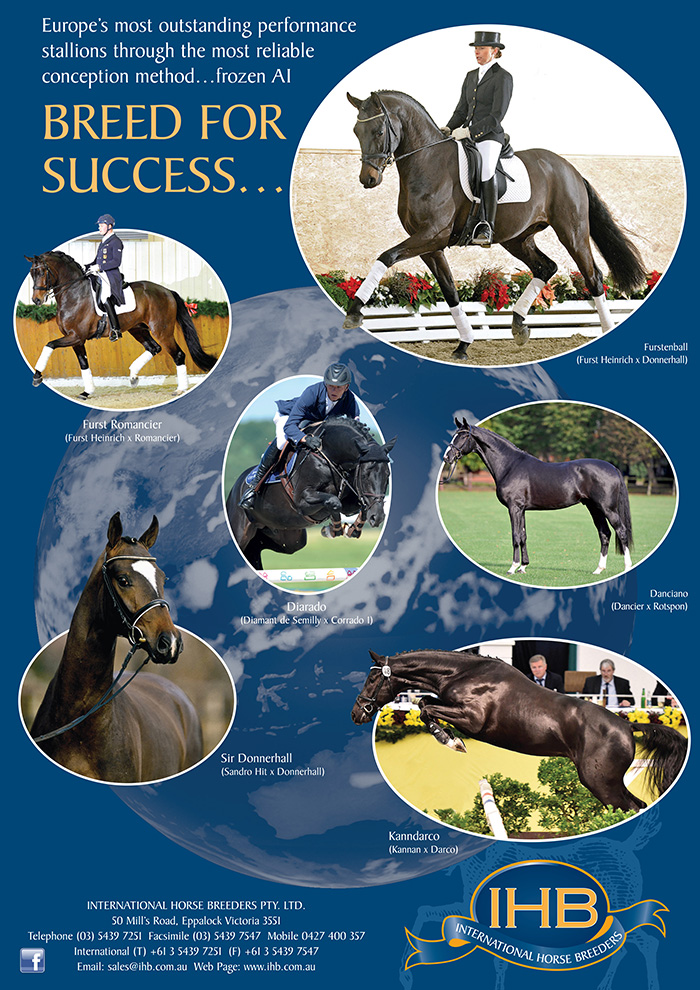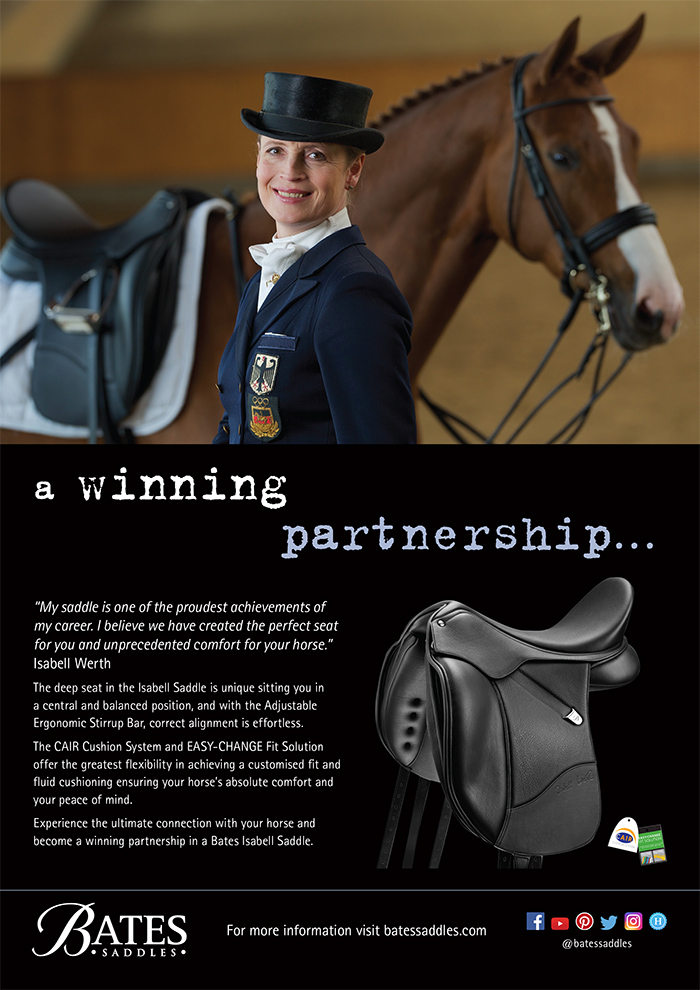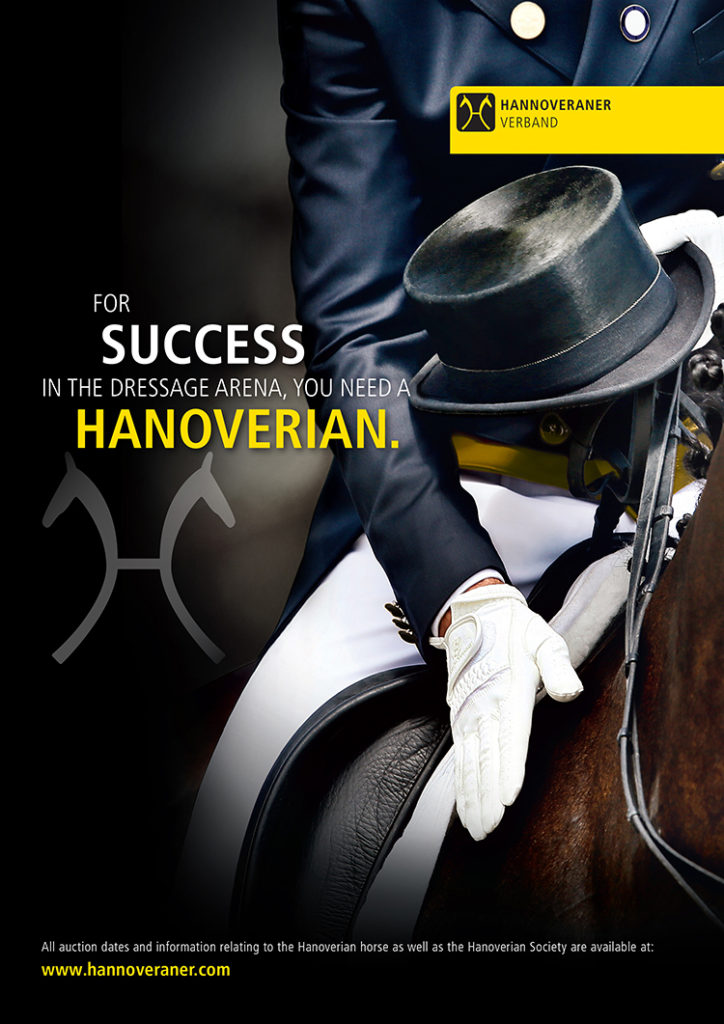Nearly 30 years on, Christopher Hector assesses the effect of Freestyle to Music…
The Kür or Freestyle was added to the Olympic Games format for the first time at the Atlanta Games in 1996. In the lead up to the Games, there were dire warnings, particularly from the German dressage experts, that it would be the end of dressage, and that the sky was about to fall in…
The World Cup which put Freestyle on the map, had been running for over ten years, since 1985, largely an initiative of Dutch dressage mover and shaker, Joep Bartels, whose wife, Tineke and daughter, Imke, have both ridden at the Finals.
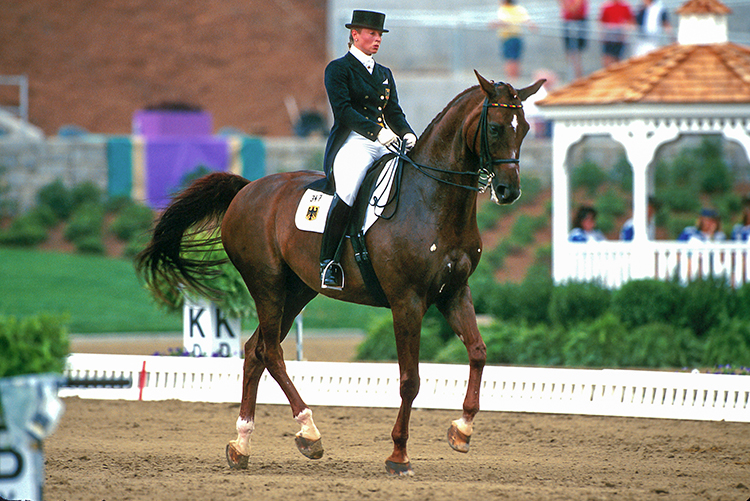
Atlanta 1996 – the beginning of the end? Isabell and Gigolo win the first ever Olympic Kür (PHOTO: PETER LLEWELLYN)
The first international event Roslyn and I covered was the World Cup Final of 1989 in Goteborg. At this point the top German combinations were shunning the World Cup qualifiers, but the winning horse was still pretty special – Corlandus and Margit Otto-Crepin. The quality of the video is awful, but the work is really impressive and I think the test would still be competitive…
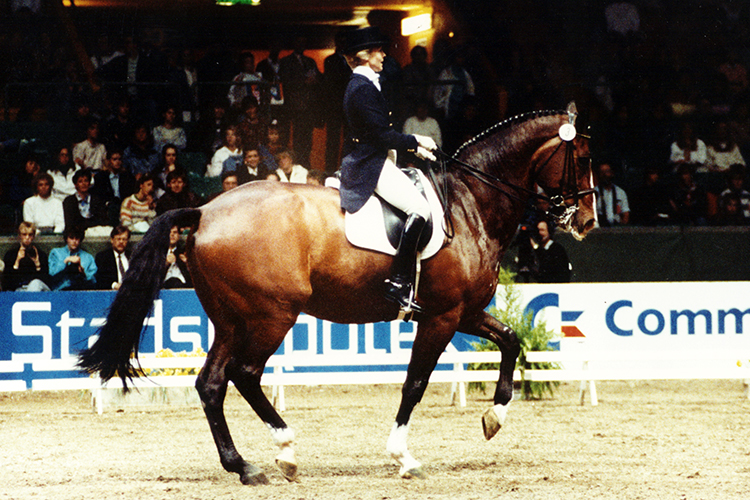
Corlandus and Margit Otto-Crepin – World Cup champions
WATCH: https://youtu.be/63wqF4JUYJ4
The huge Holsteiner had such power and charisma, but the rider also had a lot of style. I was amazed when in between the first round – the Grand Prix – and the Kür, Margit bailed up Wolfgang Niggli, head of the ground jury, in the main arena, to express her displeasure at the judging. As she waved her arms, a torrent of words flooded over the gentle Swiss judge, but he did not seem in the slightest put out, standing his ground and wagging his finger, as he put his side of the story.
The success of the World Cup was to lead to the introduction of the Kür at the 1996 Games.
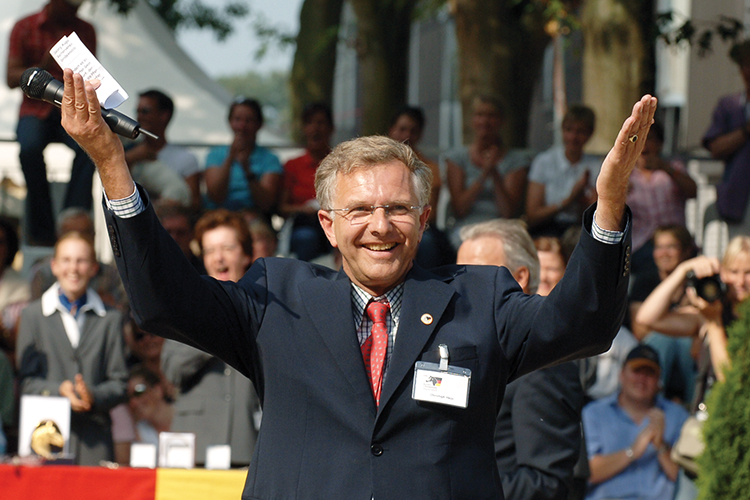
Christoph Hess, former head of the German Equestrian Education unit, and international judge, took time out to recap the history for me:
“In the beginning, I think everybody believed the Freestyle would be the end of dressage, especially important people like Reiner Klimke and Heinz Schütte. In those days it was very much Eric Lette from Sweden who pushed the freestyle – but the Germans were very negative.”
“Then Reiner Klimke came back from the Olympic Games in Atlanta, and said ”’I have to change my negative attitude to freestyle, I think without the freestyle, it would have been a very boring Olympic Games, and in his last years, he was very much in favor of freestyle.”
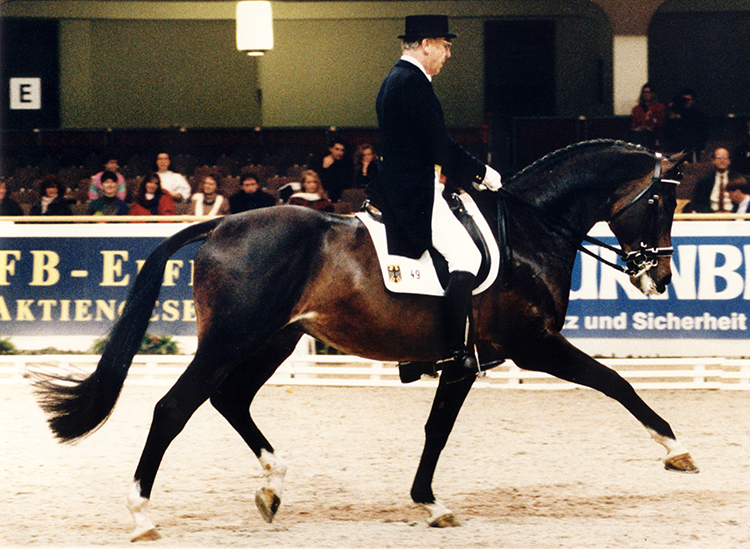
Reiner Klimke and Biotop
“At the beginning the Germans said, okay this is the end of proper dressage, of classical dressage, and therefore in the first years of the World Cup, the very best German riders did Grand Prix and Special, and the second best riders competed in the World Cup qualifiers.”
“But the attitude changed, and the best German riders started to compete in the World Cup and that made a difference.”
Indeed, Dr Klimke became an enthusiastic World Cup competitor, and at the World Cup final of 1995 in Los Angeles, he was fourth, riding Biotop on a score of 76.47.
next Christoph talks about the original promoter of the Kür, Joep Bartels
Christoph points to the key mover-and-shaker, Joep:
“Joep Bartels from Holland was very much a founder and helped freestyle get to where it is today. Now no-one would think freestyle is not a good idea. We have freestyle for pony classes, juniors and young riders, and freestyle is a big step forward. In the process we have learned a lot, because we have rules and guidelines where we know how to judge, and the riders and trainers know how to train and school the horses.”
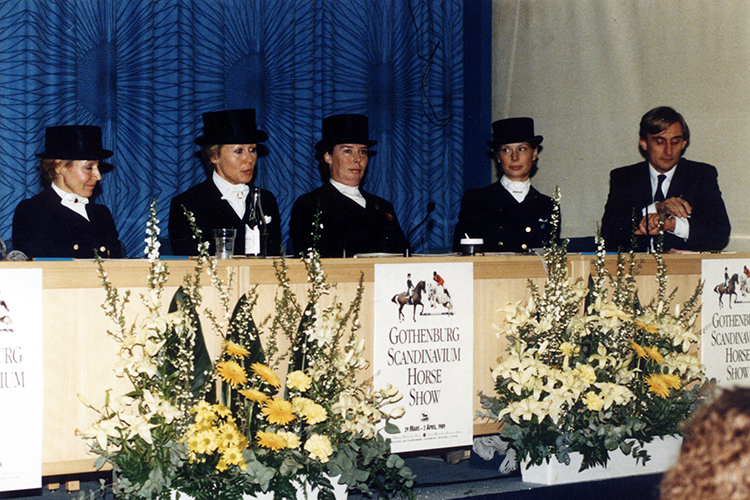
Joep Bartels keeping an eye on the time at the Press Conference in 1989 – Christine Stückelberger, Margit Otto – Crepin at the mike, Jennie Loriston – Clarke and Louise Natthorst. In those days, press conferences were required to be in English and French, with Joep providing instant translations…
The irony is that Joep tells me that it was watching Reiner’s victory lap at the 1984 Games that inspired the World Cup:
“I was inspired by the prize giving ceremony in Los Angeles, when Reiner Klimke rode his lap of honour, reins in one hand, doing one times changes, and by coincidence, it fitted exactly to the Olympic Anthem, and I saw a huge emotional reaction in the crowd. Then I was inspired, coming back to Europe, I found a sponsor, Nashua, and the next year, 1985, the World Cup began. When the World Cup series began, I was almost killed by the press for destroying dressage, and also a lot of the riders didn’t like it. I had one German rider really backing me, and helping and riding, and that was Gabriela Grillo, she was totally with me.”
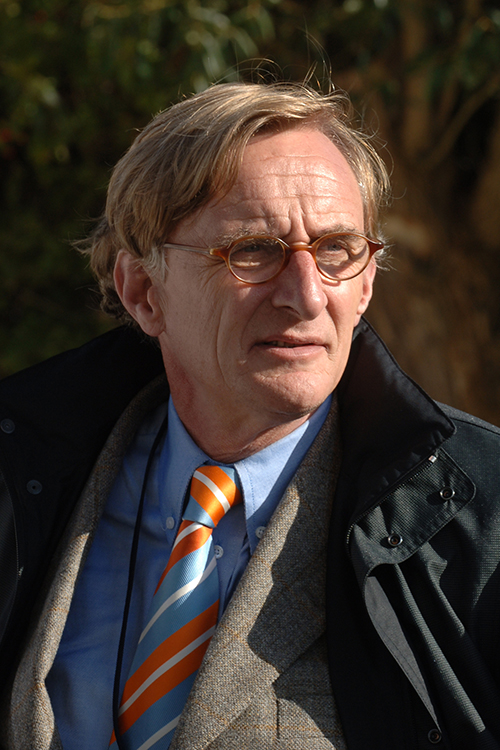
“And then we staged the first Final at s’Hertogenbosch in 1986, that was the first time dressage – in Holland anyway – sold out the house. It was a fantastic atmosphere.”
And have the dire predictions of the destruction of dressage come true?
“No, to the contrary. It took a few years of the World Cup to convince everybody that Freestyle would contribute to, rather than breaking down, dressage and people started to look with different eyes to the Kür.”
What is your personal favorite freestyle performance?
“Of all those years? It is very difficult looking back – when Marzog won the first, that was really impressive but if you compared it to today’s dressage there would be a huge difference because it is now so much better.”
“For me it was very emotional to be in Los Angeles and have Anky and Bonfire win, but it is hard to compare. You should give credit to every victory in its own perspective, the level of that time, the kind of horses of that time. Looking back now, I think Valegro is one of the best.”
“From a very personal view, and I am no longer one of the directors of the World Cup, so I can look back, my daughter, Imke, rode a Kür made by a famous Dutch pianist, and she was second in den Bosch, and fourth at the WEG in Kentucky. I’m a human being as well, so that was my personal highlight.”
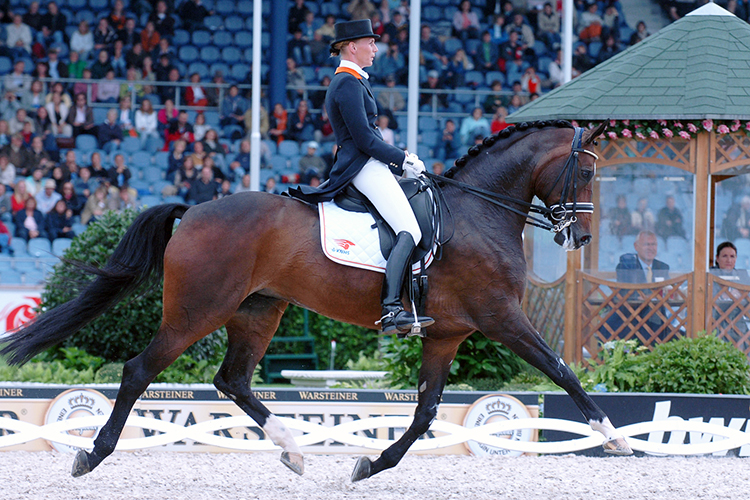
Imke Schellekens-Bartels and Sunrise
And the music – do you like the modern trend to computer synthesized scores?
“When I hear the word computer it makes me nervous. Yes the rhythm is really important, but I don’t really like computer music. Dominique d’Esme was one of the first World Cup finalists, and she wanted to bring a little orchestra with her, but that was forbidden…”
This always seems to me one of the lost opportunities. Think about it, the mega rich riders hiring the crême de la crême: Beatles reform to back Ann-Kathrin Linsenhoff, Sven Rothenberger with the Rolling Stones, it really could have been fun!
Seriously now, one of the problems was always the judging. While I was entranced at my first World Cup final, I could not help but notice that Christine Stückelberger’s Gauguin de Lully was a very ordinary pony, but he kept getting fabulous scores – did it have anything to do with the Swiss head of the jury? Judging at the finals has always involved a fine sense of the ethnic balance, if you were female and from Italy, then you got a few extra marks, or a Swede even on some lumbering hulk, you got marks because we needed to keep up the Scandinavian interest… Right now there is a determined effort to make the freestyle judging more uniform, more transparent.
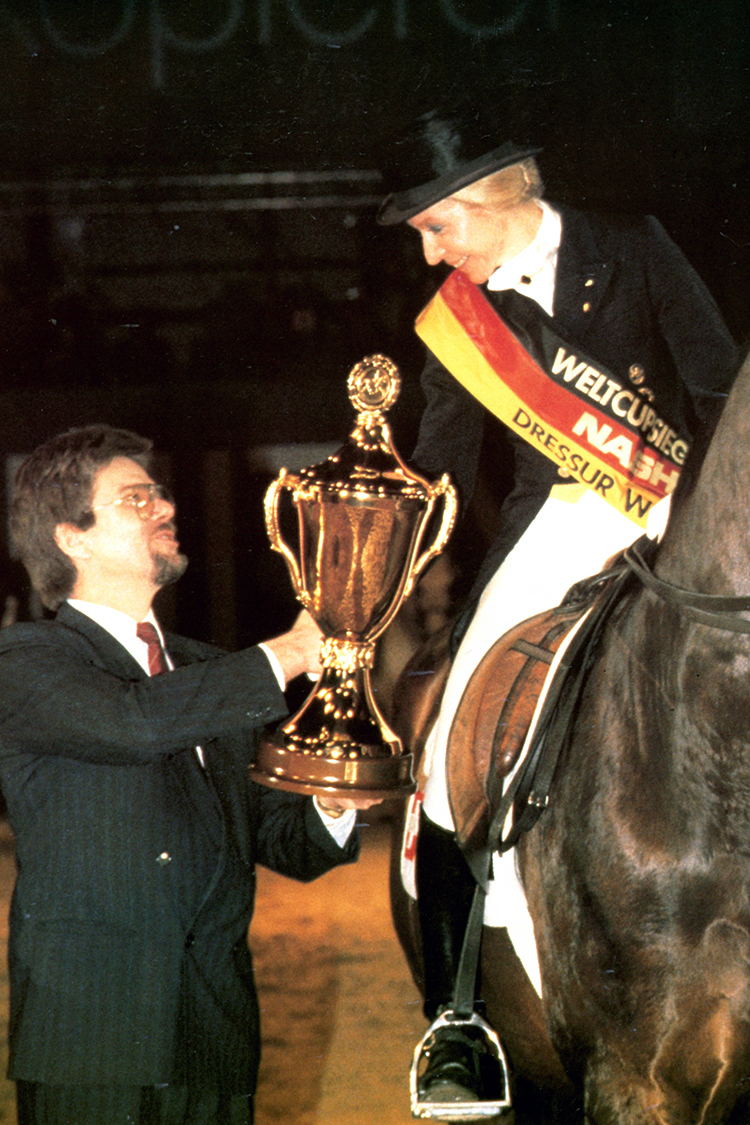
Christine Stückelberger wins her World Cup in Essen in 1987 – and below, the pas de trois of Corlandus, Ahlerich and Gauguin de Lully, that’s him tagging along at the rear.
Christoph Hess raised this issue of the difficulty of judging a freestyle with me:
“There has been a lot of discussion about judging the freestyle – what is difficult, what is not so difficult, and now we have a new system which helps the riders identify the degree of difficulty – because this is always a problem, what is really difficult? There are many judges who don’t know what is difficult and what is not so difficult. This new system should be operating in the New Year, so we are going in a good direction and there is no one in the world who thinks that freestyle is not a good idea.”
“I like it better when there are two judging sitting together, maybe at B, E and G, six judges, two always together, so one can concentrate more on the artistic, and the other on the technical, and they can mark as a team.”
“We had a seminar in Warendorf three years ago, I did it together with Wim Ernes, and we loved this approach, and I think it is a very fair way to judge because when you are judging you have to see so many things, if you are judging Grand Prix, five marks for the artistic, and sixteen for the technical. In such a short time, so many marks, then you have to listen to the music. It is much better if you can discuss it was another judge.”
“For me, freestyle is a little bit like a jump off where the rider can decide in the jump off, if he is going to risk a short turn, because the horse is feeling good – I think in the freestyle you should be able to change the test a little bit, during the test – but this will not happen if the FEI goes ahead with the plan to give the judges the movements of the test in advance. We will have to see how this new idea works at the big competitions.”
Do you think there is a problem with the music. I think back to Anky and Song Sung Blue, where the performance worked with some beautiful music, now they make up the performance and the computer fits some music around it, we’ve lost the beauty of real music…
“That is so, and it is a huge change. Back in the early 1980s, we had a big seminar in Germany and that set a protocol for freestyle: how to ride, how to train, and how to judge freestyle. One very influential person at this seminar was Gabriela Grillo, a rider who had studied music, and we had it exactly the other way round: not sending a DVD with the freestyle and then please make the music. No, they selected the music and then asked which kind of movement will work with that. Today, it is the other way round where the computer makes the music to fit the test – but I don’t think we can stop this.”
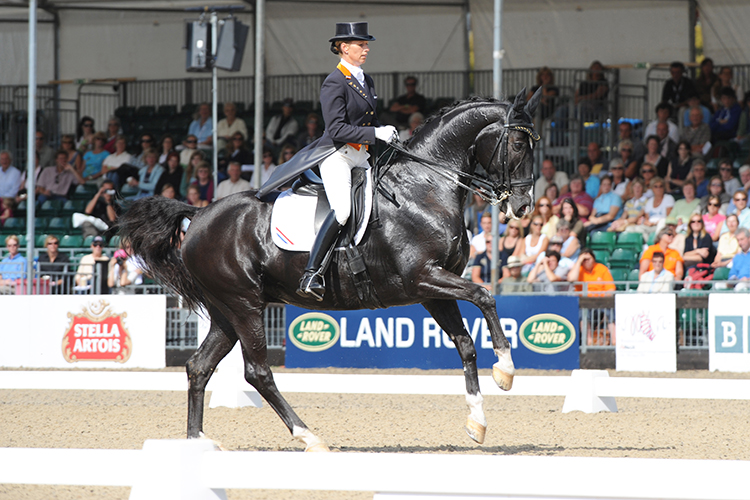
Anky and Salinero – at Windsor Euros, 2009, riding and singing for a score of 87.25. Click here to see the test…
“I think Anky was a good example. To be honest, I didn’t like her way of riding, but she was a world class top rider for freestyles. What she did was real freestyle. With Salinero, she was singing when she was riding the changes every stride, she had a lot of inspirational and creative parts in her freestyle test, and it was for me, always a highlight but to be honest from the artistic, not the technical, point of view. I’m sure many riders watched her and were inspired for their own freestyles.”
Which is your favorite freestyle?
“Of course it is easy to say, I like very much Valegro. What I like very much is if someone is riding in Rio, and uses carnival of Rio music, or if they come from Spain, riding to Spanish music. I like it if the riders represent their country and tell a special story. The Canadian rider, Ashley Holzer, she was competing two years ago in Devon, where I was judging, and she was telling a story, it was not just riding some movements, it was a story – and this for me, is very important.”
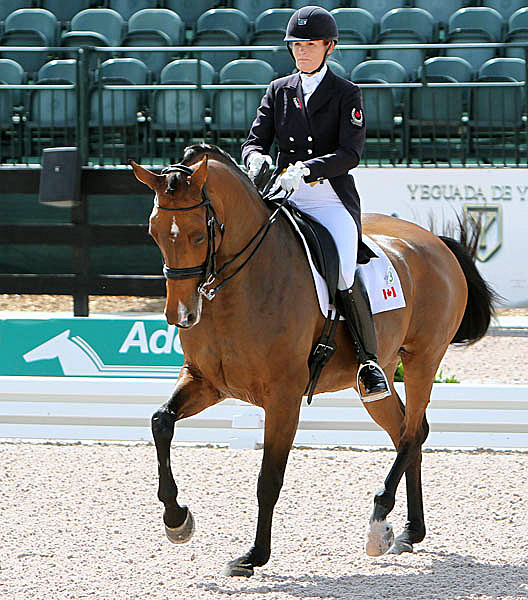
Ashley Holzer and Tiva Nana (Photo Kenneth Braddick)
“I liked very much Rafael Soto, he loved what he was doing. In those days, Klaus Balkenhol was the trainer of the German team, and I was commentating, and said at the end of Rafael’s test, now start your applause – and Klaus came to me and said, Christoph this affected the result because the judges gave better marks. I said, Klaus I will do the same for the Germans when they ride like that – Heike Kemmer was riding for Germany, and if you looked at her face it was like she was at a funeral, but Soto, he looks happy, he loves it, and this is very important. The riders have to present something, they have to present themselves, present the horse, they have to represent their country and they have to tell a story. If we do this, on the basis of good riding – it doesn’t matter how good the choreography is, if the riding is not proper it is nothing – but on a good basis, in a creative way, then it is for me a 10 point zero situation.”
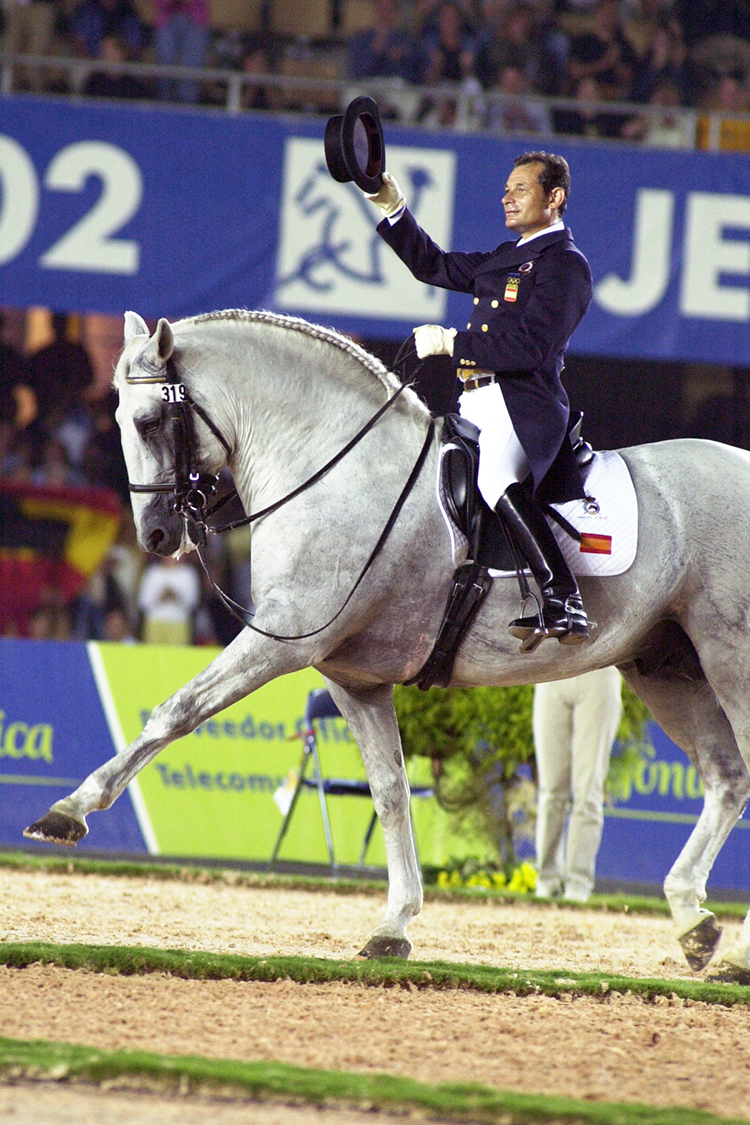
Rafael Soto and Invasor
My friend Jan Toenjes is the editor of Germany’s leading equestrian publication, St Georg, he is an astute, and witty observer of the equestrian scene. I asked him if freestyle had been a good thing for dressage…
“Obviously we had some years of circus, and still have something of that left. At least a bit. In that respect those admonishers who 20 years ago saw the end of the world coming closer were not right. But were they totally wrong? No!”
“Yes, the freestyle has brought new attraction to the dressage ring. Yes, people might be a little bit more interested in dressage now, but as we have just recently seen in Rio, dressage still is and will always be the equestrian sport that nobody can understand and, outside some European countries, will never attract people. A pole down at the final oxer or turn too long to beat the time to the vertical – that’s what people understand. Those pretending the freestyle has changed this situation in general are blind.”
“There are a lot of discussion and ideas how dressage could become more transparent. And one of the best attempts proposed is the system FEI 5* judge Katrina Wuest had developed. Her idea that a floor plan and the movements are handed in before the test, and the degree of difficulty is clearly defined for both the movements and the combinations, would be a milestone in judging. Everybody agrees on that. But the system (or anything else that comes close to it) is still not in practice. It would be helpful since we are still seeing a big lack of expertise when it comes to evaluating the degree of difficulty in a test.”
“And here we are back at the point at which I must say those who were skeptical 30 years ago were not that wrong. We have seen a lot of circus performances with the audience freaking out after the ride and judges too willing to score high what made the people in the stands scream. Things such as a Depeche Mode-blue tongue-master-and-servant-performance (yes, sometimes the tunes fit really well), some Tango tunes with more artificial steps than even a well trained Argentinian dancer could produce, some black front leg throwing with bombastic orchestra…”
“Those who saw the 2009 World Cup final in Las Vegas where Isabell Werth and Satchmo showed a program that in my opinion still is among the top three (if not still number one) freestyles, when it comes to the degree of difficulty, we were witnessing a masterpiece of riding: Zig-zag half passes in passage ridden one-handed, some 30 or so one tempis directly after two tempis on a curve line – fantastic. But judges Linda Zang and Wim Ernes scored that performance down to crown Steffen Peters and Ravel as World Cup winners. Another proof that the freestyle does not necessarily produce the winner who deserves the ribbon.”
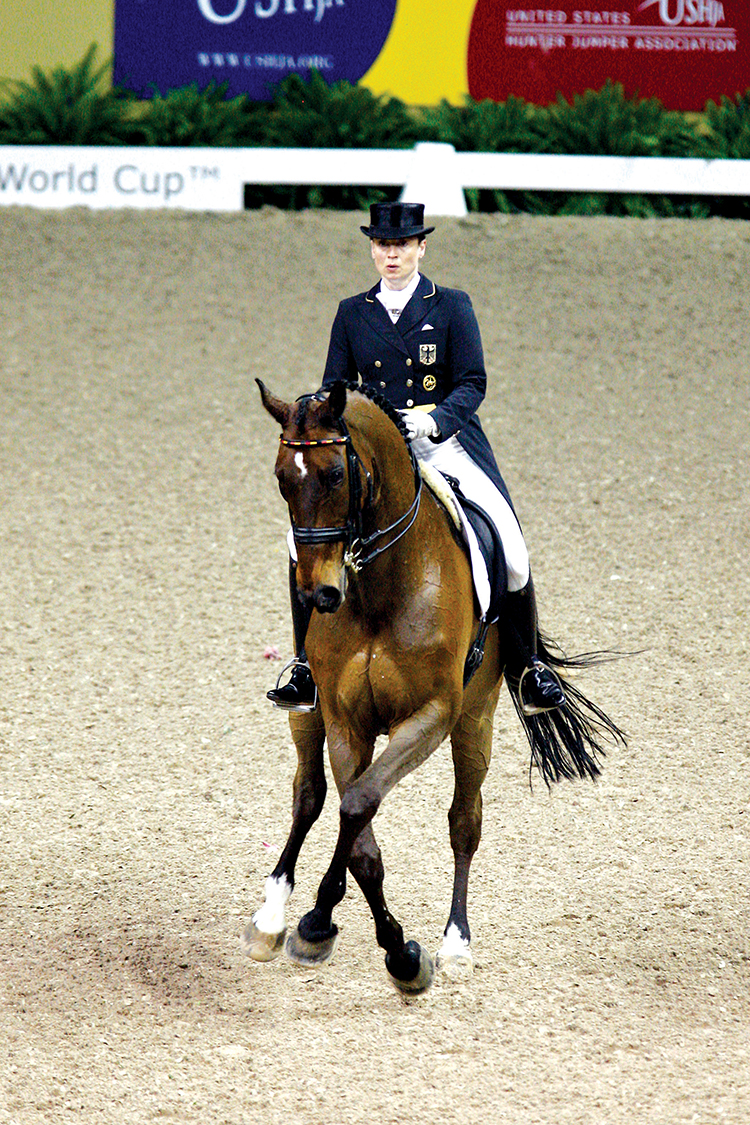
Isabell Werth and Satchmo at the 2009 World Cup final…
“BUT, and that needs to be written in capital letters, of course there were superb performances when we think of Valegro’s How-to-tame-a-dragon programme (Lyon!) and Helen Langehanenberg’s outstanding rides on Damon Hill. These horses were both, well-trained spectacular – and being that they were able to perform memorable moments that will stick in my brain forever. And Kyra’s (Kyrklund) Cabaret-freestyle with Max. Lovely, I love the tunes and I loved what Kyra made out of it.”
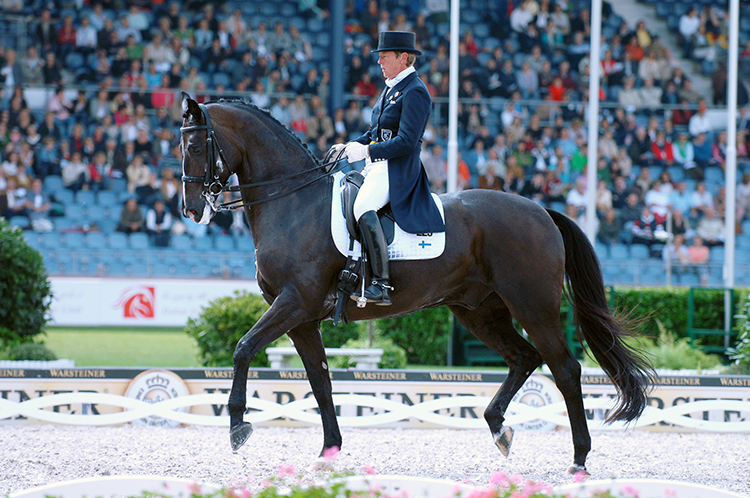
Kyra Kyrkland and Max
“BUT – sorry for having to start a sentence with these three letters for yet another time – still some questions remain: Why on earth have so many movements coefficients in the freestyle different to those used in the GP and GPS for the same movements? Yes, the walk? Why on earth is passage when performed in a freestyle something that is more of importance than let’s say the tempi changes ion the same test? And then the discussion if we need a halt for the salute. Yes, we need it! Everything else is what we see on stallion shows. That’s pure entertainment. I prefer entertaining riding in a classical way with music perfectly underlining the strengths of the combination in the ring.”
“The final question is: Can the quality of the execution of a movement be influenced by the music chosen to underline it? In other words: If a horse stays in perfect rhythm with the music in passage but the hindlegs trail to the left and right with the neck tight and the poll not the highest point, is that rather a nine or a 5.5. I think a 5.5 no matter how loud the crowd is clapping hands and screaming at the end of the performance. Am I conservative? No. But maybe a little bit more realistic than others. And optimistic that sooner or later we will have found a procedure in which harmony (the most important thing of all), degree of difficulty and music will be judged properly so that the audience will be left enchanted.”
I think Jan has hit the nail right on the head. Yes, I have seen great freestyle performances that will live forever in my mind, but freestyle in a great atmosphere can play tricks with your perception. I well remember sitting with Jan in the press stand at Aachen WEG 2006. It was a magic scene, the stands packed, the arena floodlit, and a new combination came to blow us away – Andreas Helgstrand and Matiné. We were all hypnotised – ok, every now and then, you’d glance at the monitor on the desk and there was something funny happening when you got in there close, but the total package, the music, the lights, the grey horse, swept our critical powers away. It wasn’t until the next day, that Roslyn started showing me still photos of the mare with three feet on the ground at the same time in the passage, at the awful tail swishing, that the reality broke through.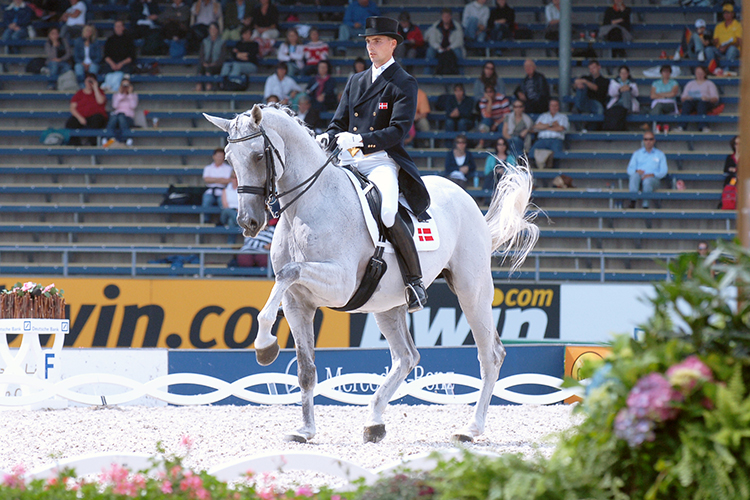
Andreas Helgstrand and Matiné
Look at it now – I don’t know what it is, I’ve seen great circus, but this is not even good circus, it is certainly not dressage in that the basic elements of rhythm and relaxation, and purity of the paces, have been destroyed. Dressage is supposed to be a gymnastic for the horse, to develop its soundness to the optimum. Horses not ridden correctly develop ‘funny’ muscles. I don’t know what a vet would make out of this, but if you look closely at her near hind leg at the back of the stifle, the leg appears to be an odd shape, and she places the leg crookedly… not to mention that three legs are on the ground together in the ‘passage’. And yes, her career was very short.
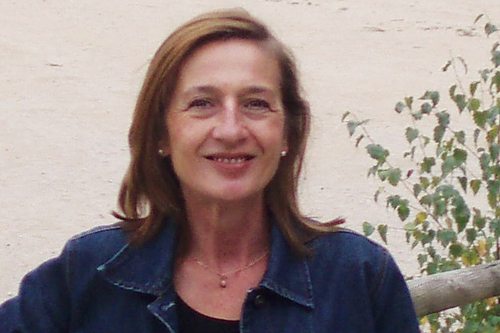
Back in 1996, it was not only the first time the Freestyle was included in the Olympic Games format, it was also the year, Bernadette Hewitt (then Faurie) was crowned Dressage Journalist of the Year by the International Trainers Club, Berni as you will see, was there at the start:
“When Chris asked me for my assessment of the rôle of the freestyle in the development of dressage, the cogs started turning immediately, and then this really annoying tune started buzzing through my head…”
“In the 1980s my horse life was all about eventing; the jumping phases that is, not the circles bit. Then for some reason I cannot recall, my friend Hayley and I decided to take a road trip to the international dressage show at the stunning Goodwood House in Sussex. It was England’s flagship show for many years, a beautiful setting in front of an historic house. Our souvenir photos included a close up of Jennie Loriston-Clarke’s spurs – we’d never seen roweled spurs before and gasped at the thought of use on any of our racing snakes which would have seen us propelled into another hemisphere, and then there was spotting Stephen Clarke in the pub looking wow in breeches. We were very young you understand.”
“Famous names were Jennie of course, Chris Bartle (who has masterminded German ascendency in eventing and whose records in dressage with Wily Trout were only broken at London 2012) his sister Jane, Gabriela Grillo who was known as a dressage to music exponent (we must have read that in the programme?) It was a new world and little could I ever have imagined that just over a decade later I’d be writing about this lark for publications across the world. I came away with a wow factor and that aforementioned bloody annoying tune.”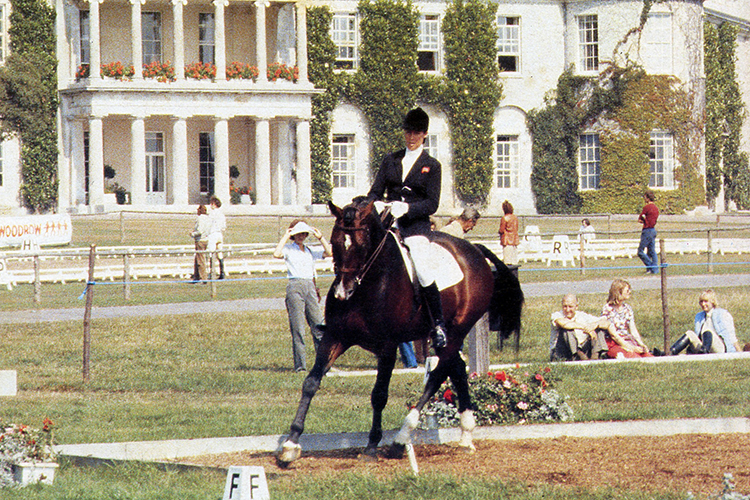
Magic happens – Jennie Loriston-Clarke and Goodwood House in the background, and Bernadette is hooked…
“Dressage to music had been around for centuries, it wasn’t exactly new in competition either but the big breakthrough was gathering momentum in the early nineties. That’s when I came in as a scribbler. At the Barcelona Olympics in 1992 the IOC’s Dick Pound had sent out a huge threat to the future of dressage as an Olympic sport. The dressage world was in for a shake- up, and boy what shaking went on. Good times, lots to write about. The introduction of, in hindsight a frankly daft, double-edged championship with medals for freestyle and medals for the special went on for a few years starting at the Europeans in Lipica the following year.”
“The World Cup series paved the way for Kür to become part of, and later the heart, of major championships. It was a transition steered with passion by the then Volvo World Cup Director Joep Bartels. The bi-annual International Trainers Club seminars organized by the Club’s founding chairman, the late Hermann Duckek, proved the platform for debate as Bartels promoted the freestyle as essential for providing the mass media and audiences with ‘sensation and emotion’. Prescient? It seems odd now, when the freestyle has done just that, to recall the quite violent opposition to the freestyle from some quarters of the dressage world; the fear that the sport would descend into circus and lose the classical, but Joep’s original plan had been to replace the Special with the Kür.”
“At the sixth IDTC conference hosted by the Kasselmanns in Hagen (and what fun it was too) the new 3-stage Olympic format was aired by Eric Lette ahead of the 1996 Atlanta Games. As he said at the time: “If we want more spectators and television, they will not understand the technicalities, but will understand whether the horse is in rhythm with the music.” London 2012 and the ‘dancing horses’ proved just that. Even so, the worries were still aired that the new format was being rushed through, and International Riders’ Club president Christine Stückelberger feared that the winner could be the one who’d spent the most in a recording studio.”
“Down the line, the rôle of the freestyle in the development of dressage has been exponential. The first factor is that, now that everyone has to do it, there’s no hiding weakness in a clever floorplan. There will always be talk about judging because dressage is a subjective sport, but the record scores we’re seeing now from Valegro and Charlotte Dujardin reward as classical a training as you can get. The dancing horses idea still gets up some people’s noses, but what fun to have dressage on the Hamish and Andy show during the 2012 Olympics (she’s a good sport is our Lyndal Oatley) and Joep was absolutely right, the emotion was the selling point and if people who have never seen dressage before can go wow, or well a tear at a fabulous performance, that’s selling our sport.”
“How hard can it be to choose a favourite freestyle? Charlotte’s gold-winning London themed freestyle with Valegro, and all those records broken, who wouldn’t like it? They nailed it as they always have. For me (to borrow one of those judge preambles) Carl and Nip Tuck’s Rio freestyle just showed how much you can do to show a horse at his best, and in partnership. Rafael Soto’s ebullience in stoking up the crowd to show their support for his beloved Invasor, and that signature Spanish walk to leave the arena. Debbie MacDonald and Brentina rocking the house to Motown at the 2005 Las Vegas World Cup, Ulla Salzgeber and Rusty’s atmospheric Carmina Burana.
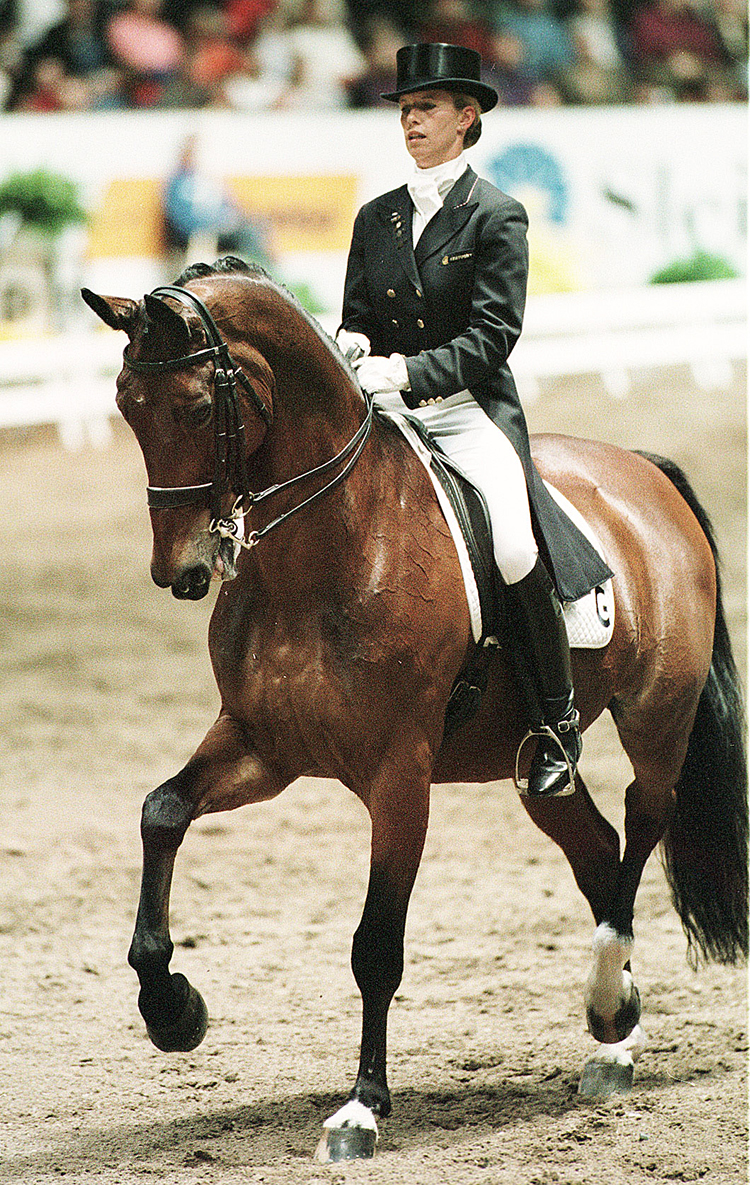
Anky and Bonfire at the WEG in Hague in 1994
“But the one that will always be in my mind paved new paths. Anky van Grunsven has a library of couture kürs but watching her and Bonfire perform Song Sung Blue first at the 1994 World Equestrian Games, then when they won the first non-European World Cup final in Los Angeles a year later, it’s that music that raises the hairs on the back of my neck even now. That music by Alie Schoenberg changed everything. Many music makers came in afterwards, but he was the one who split us away from boring synthesizers, cut-and-paste and annoying tunes.”
“I’m going to borrow Robert Dover’s favourite phrase ‘so here’s the thing’ now. My ‘thing’ is this; I have the utmost respect for all who paved the way for where our sport of dressage is today. While Bo Helander, then FEI Secretary General, said after Atlanta that dressage was now secure in the Olympics it isn’t, we’d be mad think it is. But without the freestyle, it wouldn’t be part of it now.”
“Oh yes, that annoying tune… So much has changed indeed.”
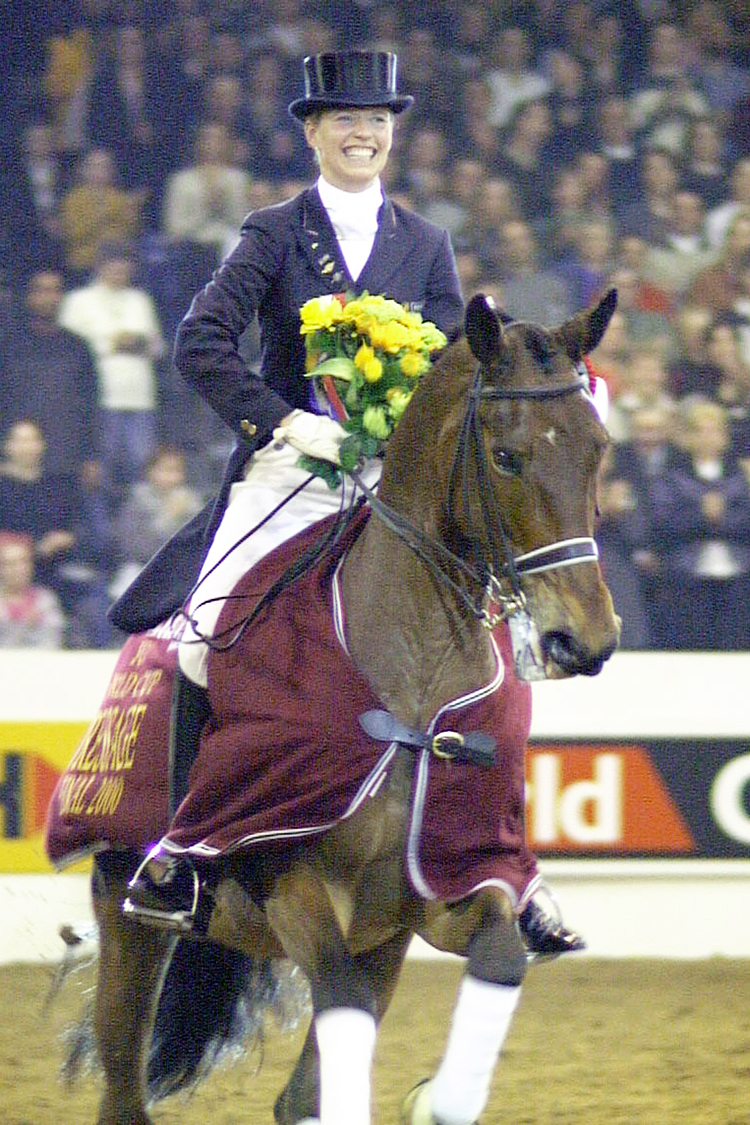
Anky and Bonfire, a Kür that will live forever, performed in the eternal city…
If Berni’s fave was from the 1994 Anky/Bonfire production, one that will always stick in my brain was four years later, in Rome, when the pair unveiled new magic, this time using the score from West Side Story. I guess the magic was made just that bit more complete because Australian dressage aficionado, and Opera singer, Emmanuel Baldicchino was sitting in front of me, quietly singing along with the action…
 Jeremy Steinberg is an American dressage coach, and a keen and articulate critic of the dressage scene…
Jeremy Steinberg is an American dressage coach, and a keen and articulate critic of the dressage scene…
When the freestyle was introduced to the Games, there were critics who said that it would kill dressage, now more than 20 years on, is the beast, healthy, dead or sick?
“I would venture to say that it is relatively healthy. I think the problems in the sport, especially at top level, are relatively separate from the introduction of the freestyle. I know when it came in, there were quite a few riders that jumped up and down and said it was going to be the death of the sport but I don’t think that’s inherently what is causing the problems these days.”
“We do have problems. We’ve seen over the years the test continually getting shorter and changed to suit sponsorship, spectators, time allowances and all those things, and that has resulted in the removal of some key elements, and that has changed a bit the training path that I think it is important to stay pure to. One of the big ones was the removal of the old rocker rein back, a few steps back, a few steps forward, a few steps back again, which was always a very good test of throughness and suppleness, submission, and if the horses are really learning to sit and take weight behind. The rein back was almost removed from the Grand Prix for a while, then brought back in. It seems almost random the way it is put in the test at the moment. Every few years it seems like they try to shorten the test more and more and take away from the technical aspects of it.”
Do you personally enjoy watching freestyles?
“Yeah. I have a hard time watching in general, because I find so many little things that I nitpick at. I’m not the world’s best spectator but I do enjoy the freestyles because I am a music person myself, I am always interested to see the way people are using old music, new music, blending the two together, sometimes classical, sometimes pop and working with the horses…”
I would have thought a love of music might make freestyles less rather than more attractive, given that most of them are performed to loud, over-syncopated junk – the sort of ‘music’ that belongs in an elevator…
“It is often like that, it’s that Europop where they will take any song, revise it, put the drum machine to it and try to perfect that to the horse’s footfalls. I think that is a popular way of doing it. One, because it is easy. Two, because it is using music that the judges and the people in the audience know. For me, kind of like you, it makes my skin crawl to hear that stuff.”
“Every now and then you hear one that sweeps you away. I remember the one from Imke Bartels in Vegas, years ago, where she did this all piano freestyle, and I’m not even a huge piano fan even though I play the piano at bit, but I was never in love with it as freestyle music until I saw that freestyle, and it was just so well done – a new piece of music, kind of modern meets classical, it was the best freestyle of the time.”
Her father has already picked that as his favorite freestyle, you’ll have to pick another…
“The one Gabriela Grillo did years and years ago, it had the polka from the Bartered Bride, which has always been one of my favorite pieces of music, the way it swells and wells and comes and goes, and if I remember right she was the first one to do the walk pirouette up into the canter pirouette, which was revolutionary at that time and it was right for that piece of music.”
“Kyra Kyrklund has also done a couple – the one where she won with Matador in 1991. It was an odd one, she had some techno music mixed in with some classical music, that was another that moved me…”
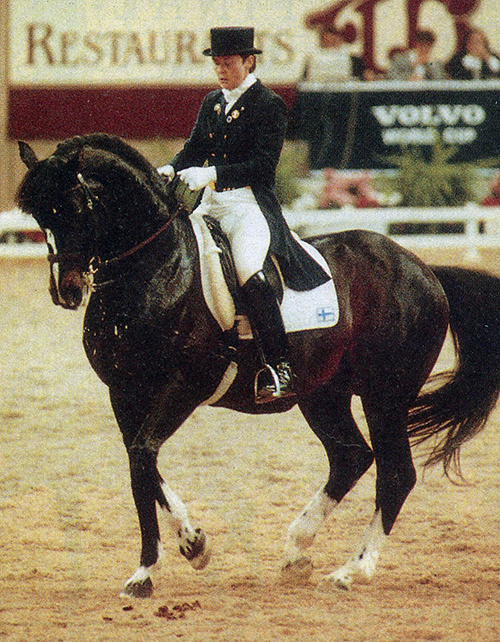
Thank you Jeremy for pointing to this treasure of a freestyle. Matador’s first, with Kyra taking some breath-taking risks on her way to winning the 1991 Cup. Wait for the piaffe pirouette, followed by the double pirouette in canter, and instantly into walk. Wow…
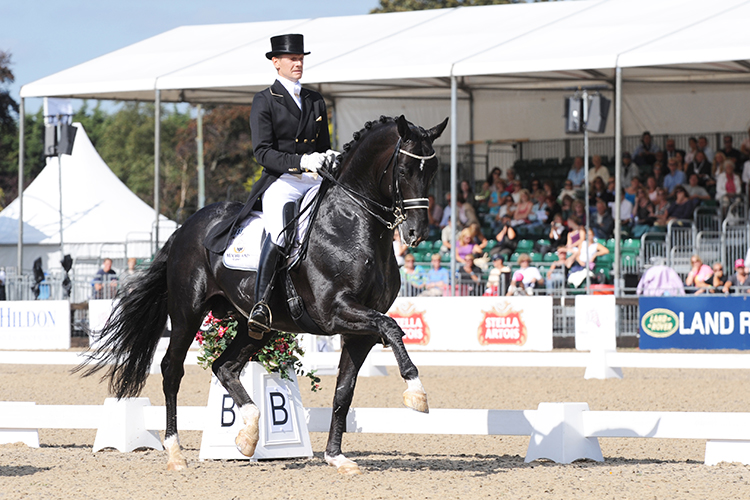
Edward Gal and Totilas
I guess that as the organizer of this little seminar, I get to pick my own favorite, and that is not easy. One of my very special nights was in Windsor at the European Titles in 2009, there Edward Gal and Totilas produced an absolutely stunning performance….
No survey of the modern freestyle would be complete without mention of one of the magic combinations: Ulla Salzgeber and the horse from the other side of the Iron Curtain that was swapped for a washing machine, Rusty.
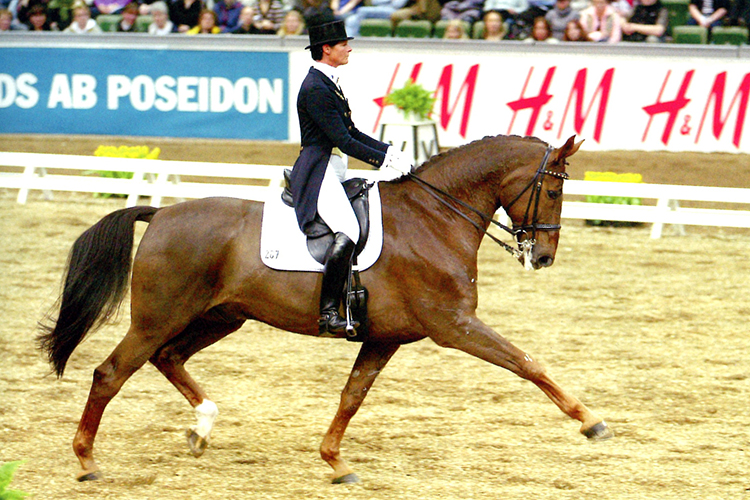
Ulla Salzeger and Rusty
But, and it is a big big but, how can I go past Charlotte and Valegro, in London, winning the gold medal? Two videos this time. The first one sets the scene, the second gives you most of the test.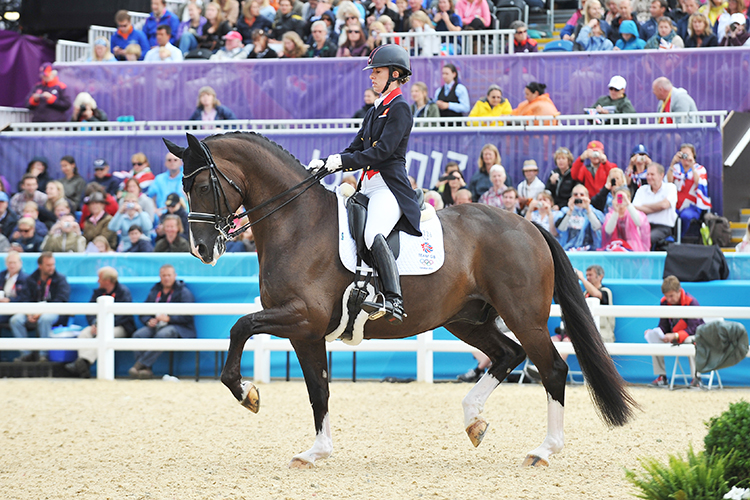
Charlotte Dujardin and Valegro
https://www.youtube.com/watch?v=urMEKrFW9Ic
Yes of course it was a good thing, thank you to all the fine riders and wonderful horses that have made it so…
